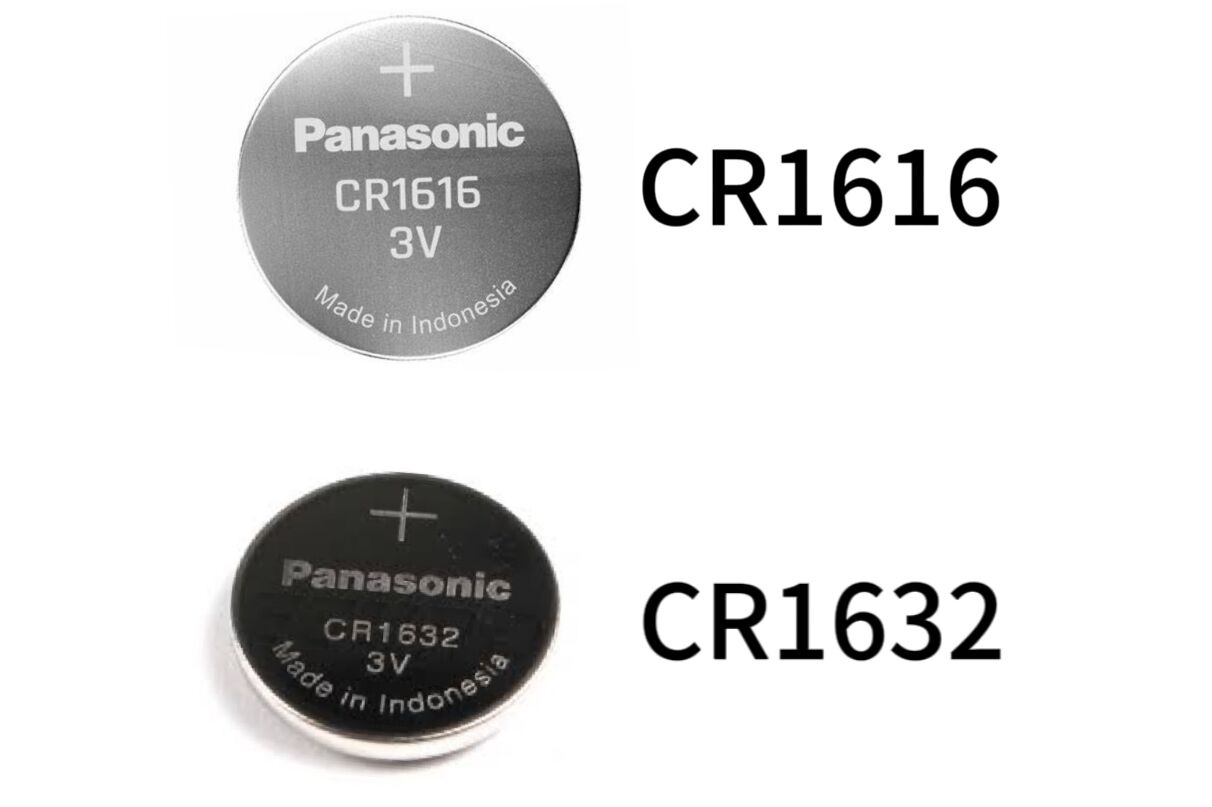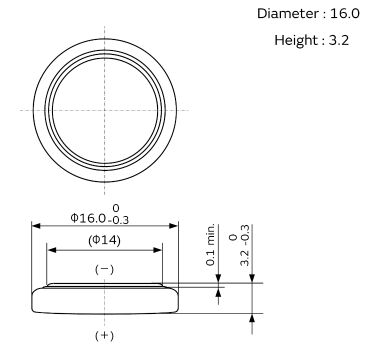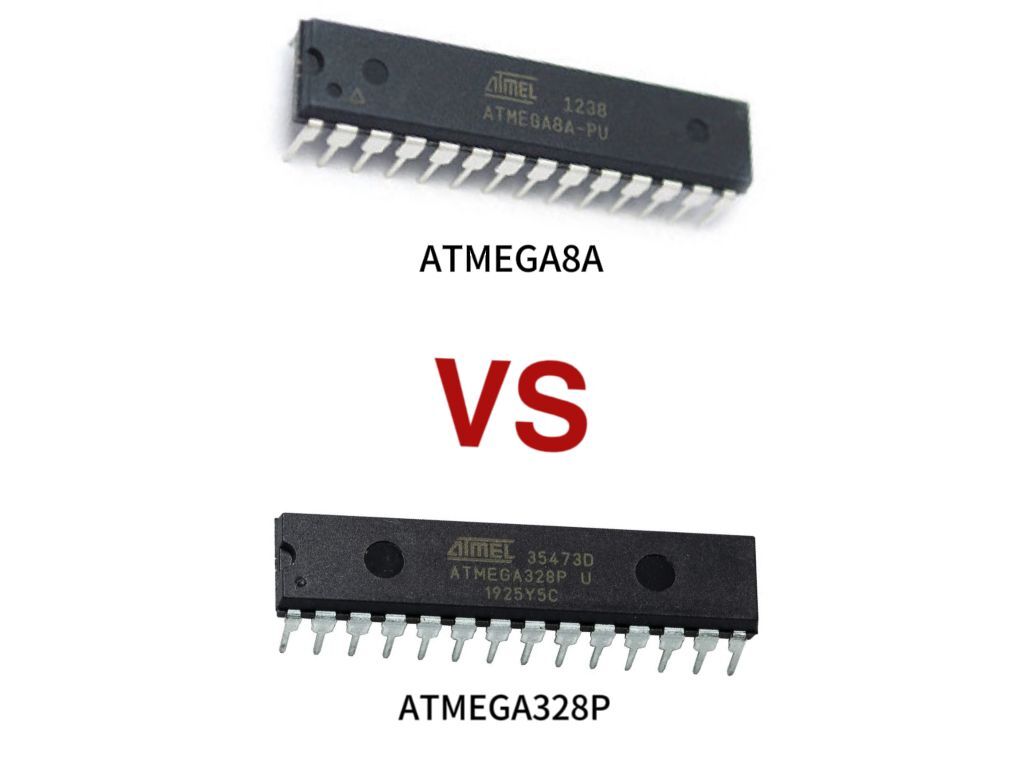Introduction to CR1616 vs CR1632 Batteries:
CR1616 Battery:
- Size: The "CR" in CR1616 indicates a lithium coin cell battery with a diameter of approximately 16mm and a thickness of around 1.6mm.
- Capacity: The CR1616 typically has a lower capacity compared to larger cells, typically around 50-70mAh.
- Voltage: It provides a nominal voltage of 3 volts, commonly used in small electronic devices like watches, calculators, key fobs, and medical devices.
- Usage: Due to its compact size, the CR1616 is ideal for applications that require a slim profile while providing a reasonable amount of power.
- Common Applications: It is commonly found in small electronic devices that require a reliable power source to maintain functionality over extended periods.

CR1632 Battery:
- Size: The CR1632 also belongs to the lithium coin cell battery family with a diameter of approximately 16mm and a thickness of around 3.2mm.
- Capacity: It typically offers a higher capacity compared to the CR1616, ranging from 120-140mAh.
- Voltage: Like the CR1616, it provides a nominal voltage of 3 volts and is utilized in various compact electronic devices.
- Usage: The CR1632 offers a balance between size and capacity, making it suitable for devices that require slightly more power and can accommodate a slightly thicker battery.
- Common Applications: It is often used in devices such as small remote controls, digital thermometers, blood pressure monitors, and other compact electronic gadgets.
Key Differences:
-
Size and Thickness: The primary difference between the CR1616 and CR1632 batteries is their thickness, with the CR1632 being almost twice as thick as the CR1616.
-
Capacity: The CR1632 generally has a higher capacity than the CR1616, which means it can provide more power and potentially last longer in devices.
-
Application Suitability: The choice between the two batteries depends on the specific requirements of the device. The CR1616 is suitable for ultra-compact devices, while the CR1632 provides a bit more power in devices that can accommodate its slightly larger size.
Considerations:
-
Device Compatibility: Ensure that the device requiring a coin cell battery specifies the correct size and type for optimal performance.
-
Longevity: Depending on the power requirements of the device and its usage, the higher capacity of the CR1632 might be more suitable for longer-lasting power.
-
Cost: Typically, batteries with higher capacities are more expensive, so consider the longevity and cost-effectiveness based on the device's power needs.
Choosing between the CR1616 and CR1632 batteries involves balancing size constraints, power requirements, and device compatibility to ensure optimal performance and longevity for your electronic devices.
Characteristics of CR1616 and CR1632 Batteries:

CR1616 Battery:
- Size: Diameter of approximately 16mm, thickness of around 1.6mm.
- Chemistry: Lithium manganese dioxide.
- Voltage: Nominal voltage of 3 volts.
- Capacity: Typically ranges from 50-70mAh.
- Applications: Used in small devices like watches, calculators, key fobs, and medical devices.
- Dimensions: Compact and slim for devices requiring a thin power source.
- Longevity: Provides reliable power for small electronic devices over extended periods.
- Common Uses: Ideal for devices that have space constraints and low power consumption.

CR1632 Battery:
- Size: Diameter of approximately 16mm, thickness of around 3.2mm.
- Chemistry: Also lithium manganese dioxide chemistry.
- Voltage: Nominal voltage of 3 volts.
- Capacity: Typically ranges from 120-140mAh.
- Applications: Suited for compact electronic devices such as remote controls, digital thermometers, and small gadgets.
- Dimensions: Slightly thicker than CR1616, offering more capacity.
- Longevity: Higher capacity allows for longer-lasting power compared to CR1616.
- Common Uses: Provides a balance between size and capacity for electronic devices with moderate power requirements.
Key Differences:
-
Size and Thickness: The CR1632 is thicker than the CR1616, accommodating its higher capacity.
-
Capacity: CR1632 has a significantly higher capacity than CR1616, offering more power for devices.
-
Applications: CR1616 is used in ultra-compact devices, while CR1632 is suitable for devices requiring slightly more power.
Additional Considerations:
-
Compatibility: Verify that the device is designed to use either a CR1616 or CR1632 battery for optimal performance.
-
Power Requirements: Select the battery based on the specific power needs of the device.
-
Cost vs. Longevity: Consider the trade-off between battery cost and longevity based on the device's power consumption and expected usage.
Understanding the characteristics of CR1616 and CR1632 batteries helps in selecting the appropriate power source based on the device's size constraints, power demands, and usage requirements for reliable and long-lasting performance.
Main Parameters of CR1616 and CR1632 Batteries:
CR1616 Battery:
- Size and Dimensions:
- Diameter: Approximately 16mm
- Thickness: Around 1.6mm
- Chemistry:
- Lithium manganese dioxide
- Voltage:
- Nominal: 3 volts
- Capacity:
- Typically ranges from 50-70mAh
- Temperature Range:
- Operating: -20°C to 60°C
- Storage: -20°C to 40°C
- Shelf Life:
- Usually around 7-10 years
- Applications:
- Watches, calculators, key fobs, medical devices, small electronic gadgets
CR1632 Battery:
- Size and Dimensions:
- Diameter: Approximately 16mm
- Thickness: Around 3.2mm
- Chemistry:
- Lithium manganese dioxide
- Voltage:
- Nominal: 3 volts
- Capacity:
- Typically ranges from 120-140mAh
- Temperature Range:
- Operating: -20°C to 60°C
- Storage: -20°C to 40°C
- Shelf Life:
- Usually around 7-10 years
- Applications:
- Remote controls, digital thermometers, small electronic gadgets
Key Parameters to Compare:
- Size: CR1616 is thinner at 1.6mm while CR1632 is thicker at 3.2mm.
- Capacity: CR1632 typically offers higher capacity than CR1616.
- Voltage: Both batteries have a nominal voltage of 3 volts.
- Chemistry: Both batteries use lithium manganese dioxide chemistry.
- Temperature Range: Similar operating and storage temperature ranges.
- Shelf Life: Typically both have a shelf life of 7-10 years.
Additional Considerations:
- Power Needs: Choose based on the device's power requirements.
- Size Constraints: Consider the physical dimensions of the device that will accommodate the battery.
- Longevity: Evaluate how long the battery needs to last before replacement.
- Cost: Balancing capacity and cost for the most efficient choice.
Understanding the main parameters of CR1616 and CR1632 batteries assists in selecting the appropriate battery for specific devices based on size, capacity, voltage, and other relevant characteristics required for optimal performance and longevity.
Frequently Asked Questions
1.What is the lifespan of CR1616 and CR1632?
CR1616 batteries have a lifespan of 1 to 5 years; CR1632 batteries generally have a relatively high capacity, so under normal use conditions, their lifespan can be as long as 2 to 10 years. The life of both CR1616 and CR1632 depends on their load in the device (current demand), operating temperature, storage temperature and other environmental factors.
2.What are the application fields of CR1616 and CR1632?
CR1616 and CR1632 batteries are widely used in various small electronic devices, such as: watches, calculators, electronic alarm clocks, car key FOB, etc.
3.How to install and replace CR1632 battery correctly?
Before replacing the battery, turn off the device and unplug it from power. This will prevent short circuits or damage to electronic components. Find the battery compartment cover or battery compartment door on the device and open it, carefully remove the existing CR1632 battery. Be careful during this process to avoid damaging the battery or the electronic components inside the battery compartment. Before installing a new battery, make sure you know the correct battery polarity. Usually, the battery will be marked with positive (+) and negative (-) marks, and the battery compartment should also be marked accordingly. Make sure the battery is properly aligned.
4.How to identify whether the CR1616 battery is exhausted?
Some devices have a battery indicator, usually an icon or symbol, that shows the battery level. If the battery level indicator shows low battery level, or shows no battery level, this may be a sign that the battery is exhausted. If you are using a small LED light or device powered by a CR1616 battery, the LED light may become dim, which may be a sign of low battery power.


